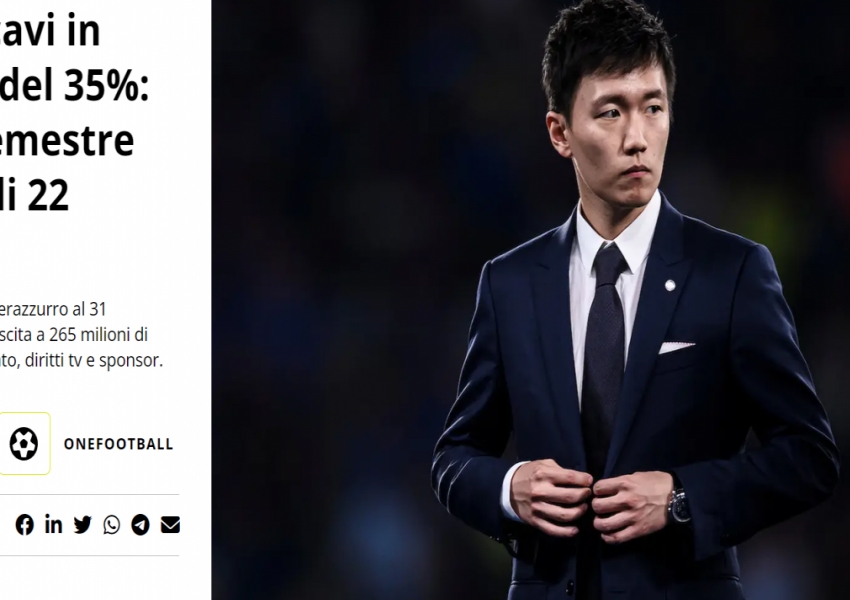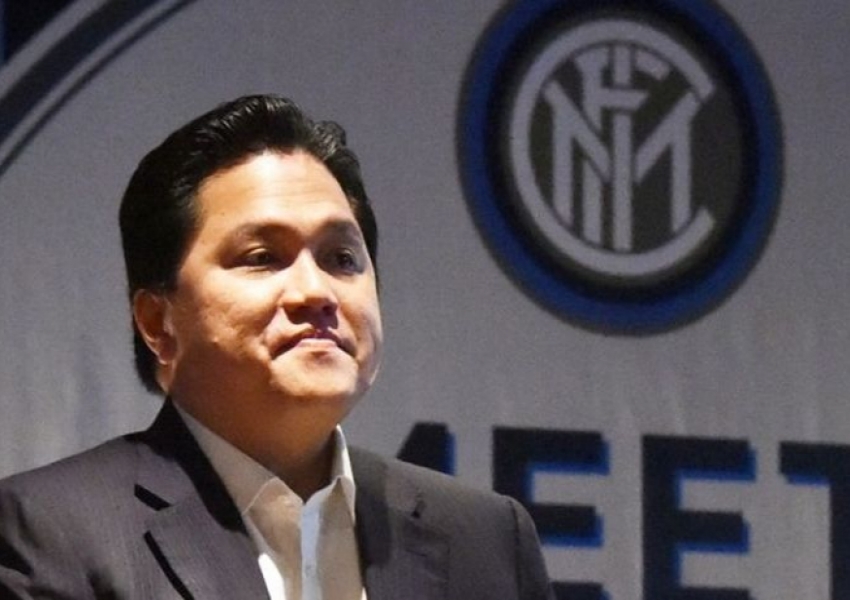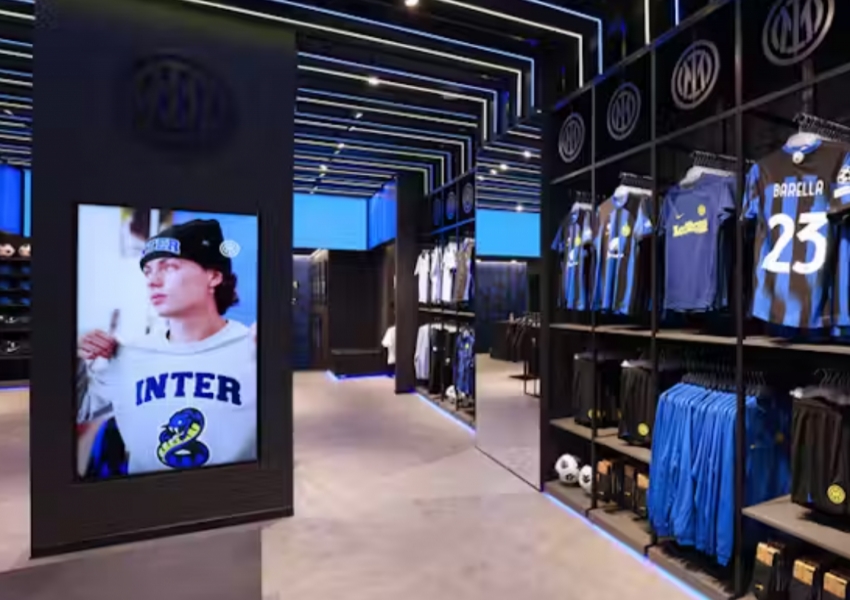Can Inter Milan Achieve Year-End Profitability? Three Key Variables and the Potential Windfall from a Second Star
Inter Milan recently released their official financial report for the first half of the 2023-24 season. The club reported a revenue of €265.4 million and a net profit of €22.3 million. Compared to the same period last season, revenue increased by €91.8 million and profit grew by €85.8 million. Fans have been actively discussing two main questions. Drawing from recent reports by La Gazzetta dello Sport, Sky Sports, Calcio Finanza, and financial experts like Marco Bellinazzo, let’s analyze these questions.

Understanding the "Debt-to-Equity" Conversion
The first question revolves around the "debt-to-equity" conversion of €22 million approved by Steven Zhang, as mentioned in the official financial report. What does this mean, and how should it be evaluated?

In simple terms, debt-to-equity conversion occurs when Inter's creditors waive their claims to repayment, thereby increasing the club’s capital and net assets to cover previous deficits. This is the second step in a two-step capital injection process frequently used by the Zhang family during their tenure with Inter. The first step involves injecting funds into Inter’s accounts as a loan, recorded in the financial report as debt owed by the club. The second step involves waiving this debt, converting it into equity, thus reducing Inter’s debt and increasing net assets.

Why not increase capital directly instead of this two-step approach? The Zhang family controls 68.55% of Inter’s shares. Direct capital increase would dilute the holdings of the second-largest shareholder (LionRock Capital, 31.05%), the third-largest shareholder (Pirelli, 0.37%), and numerous small shareholders. This dilution is not their goal. The objective is to provide financial security for the team without undermining partners. Since 2016, the Zhang family has directly injected €142 million into Inter. Additionally, they have issued €452 million in shareholder loans, most of which have been converted into equity.
This approach starkly contrasts with the previous owner, Erick Thohir, who also used loans to cover deficits but never converted them into equity. Thohir ultimately used these loans to profit personally when he left the club, a period marked by Inter's mediocre performance. In contrast, Steven Zhang's commitment and transparency have earned him respect from Inter fans.
Can Inter Achieve a Year-End Profit?
The second question concerns whether Inter can achieve a year-end profit given their half-year financial performance. This goal is challenging for several reasons.
First, two revenue sources in the half-year report (proceeds from summer sales like Onana and Champions League group stage earnings) will diminish in the second half of the year as Inter is no longer in the Champions League. Financial experts previously predicted Inter would end the year with a €40 million deficit. However, the half-year report shows revenues exceeding these projections, casting doubt on the initial €40 million loss estimate.
Key Revenue Increases
Two significant revenue increases are worth noting.
- Ticket Revenue: Inter's ticket sales in the first half of the season increased by €29.4 million compared to the same period last season. This boost is due to improved team performance, more entertaining matches, and high attendance rates.
- Other Revenue: This includes merchandise sales, particularly from jersey sales. For example, Inter's retail revenue jumped from €4 million in the 2020-21 season to €13 million last season, with expectations of further significant increases this season.
Given these unexpected boosts, previous predictions of a €40 million deficit may need revision. Three variables will ultimately determine Inter's year-end financial results.
Three Key Variables
- Transfer Market Activity: By June 30, Inter needs to secure funds through the transfer market. This does not mean selling key players but rather focusing on buyout clauses for loaned players. For instance, Marseille could buy Joaquín Correa if they qualify for the Champions League. Other loaned players like Zinho Vanheusden and Lucien Agoumé could also see their buyout clauses activated. If these clauses are triggered before June 30, Inter can decide whether to include these revenues in this year's or next year's financial report.
- Revenue from Winning a Second Star: Inter’s management emphasizes that securing a second star (winning a 20th Serie A title) will result in substantial revenue. This historic achievement will generate immense financial gains, primarily through increased merchandise sales. Millions of Inter fans worldwide will feel compelled to purchase new jerseys featuring the second star, driving sales significantly. Conservative estimates suggest jersey sales alone could bring in €24 million, but actual figures could be much higher.
- Major Expenses: Inter is also working on new stadium plans, with financial implications for this year's report. The financial CEO recently reiterated the goal of opening a new stadium by the 2028-29 season. By April 30, Inter must decide whether to purchase land for the new stadium, a transaction potentially worth tens of millions of euros, impacting this year's financial report.
The Financial Outlook
These variables will determine Inter's final financial performance for the year. However, two points are clear:
- Inter’s financial situation this year will be the best since the pandemic began.
- If Inter’s year-end deficit is significantly lower than the previously estimated €40 million, it won’t be surprising.
Inter’s proactive measures, including converting debt to equity and capitalizing on increased ticket and merchandise sales, have strengthened their financial position. The potential revenue from a second star, increased buyouts from loaned players, and careful management of major expenses like new stadium plans will be crucial in determining whether Inter Milan can achieve a year-end profit.
The increased ticket sales are a testament to the improved matchday experience and fan engagement. Fans are more willing to attend games, contributing to a significant boost in revenue. Additionally, merchandise sales, particularly jerseys, have seen a substantial increase. This surge is expected to continue, especially if Inter secures the second star, which would drive even more fans to purchase new jerseys.
The transfer market activity before June 30 is another crucial factor. Securing buyouts for loaned players like Correa, Vanheusden, and Agoumé could provide significant revenue. These buyouts, if activated, will directly contribute to Inter's financial performance for the year. The club's management will need to strategically decide whether to include these revenues in this year's financial report or carry them over to the next year.
The potential revenue from winning a second star cannot be overstated. The historic significance of a 20th Serie A title would not only be a monumental achievement for the club but also a financial windfall. Fans worldwide would flock to buy new jerseys featuring the second star, driving merchandise sales through the roof. While conservative estimates suggest a €24 million boost, the actual figure could be much higher, providing a significant financial cushion for the club.
Lastly, the major expenses related to the new stadium plans will play a crucial role. The decision to purchase land for the new stadium, expected by April 30, will have a substantial financial impact. The club's management must carefully balance these expenses with the potential revenues to ensure a positive financial outcome for the year.
In conclusion, Inter Milan's financial outlook for the 2023-24 season is significantly brighter than in previous years. The combination of increased ticket sales, merchandise revenue, strategic transfer market activity, and the potential windfall from winning a second star puts the club in a strong position to achieve a year-end profit. While challenges remain, the proactive measures taken by the club's management and the potential for significant revenue increases provide a solid foundation for a successful financial year.
Copyright Statement:
Author: mrfootballer
Source: Mrfootballer
The copyright of this article belongs to the author. Reproduction is not allowed without permission.
Recommended Blog
- Worst on the Field! Inter Milan's Star Forward Trails Only Ronaldo on Embarrassing Euro Stats: Major Weakness Limits His Potential
- Euro 2024 Round of 16: Did the Netherlands Accurately Predict Their Situation? Turkey's Strategic Group Stage Maneuvers
- Why Inter Milan Struggles to Sign Mourinho’s “New Achraf”: Is the Free Transfer of Hermoso a Blessing or a Curse?
- Major Boost in Inter Milan's Stability: Internal Summit May Be Advanced as Coach's Demands Shape Three Key Season-End Highlights
- No Tickets! Inter Milan's Derby Title Dream Becomes AC Milan's Windfall, Increasing Safety Concerns
- Inter Milan Equals 20-Year Record, Celebrating Long-Awaited Triumph After Eight Years of Consistency
- Inter Milan's Biggest Threat Among European Giants: The Inevitable Overhaul of the "13 Veterans"
- Inter Milan's 5-Year, €90M Deal Awaits Zhang Kangyang's Green Light: Why the Delay?
- The Storm Won't Calm: Lautaro and Acerbi Present New Challenges for Inter Milan
- Inter Milan Lays Foundations for the Future: Long-term Strategies and Rising Stars
Hot Blog
- Champions League Quarterfinals Set: Arsenal Crush PSV 9-3, Villa Dominate Brugge 6-1! Real Madrid vs. Arsenal Confirmed
- Champions League Drama: Rare Penalty Violation! VAR’s Eagle Eye Turns 60,000 Cheers to Silence
- Vinícius Jr. Misses Crucial Penalty as Atlético Fans Erupt – Bellingham Offers Consolation in Madrid Derby Thriller
- Champions League Quarterfinals Set to Take Shape – Arsenal and Villa Poised to Advance, Real Madrid in Strong Position, Dortmund Facing an Uphill Battle
- Real Madrid Survive Atlético Thriller: Win 4-2 on Penalties to Set Up Quarterfinal Clash with Arsenal
- 1-4! 0-4! A Dark 24 Hours for Chinese Football – Shanghai’s Giants Humiliated and Eliminated from the AFC Champions League
- 4 AM Showdown: Manchester United’s Do-or-Die Battle – Defeat Means Elimination and a Trophyless Season
- Man City’s 21-Year-Old Star Returns Home as a Hero! Receives $350,000 Mercedes, Gifts It to His Father
- AFC Champions League Quarterfinal Draw: Yokohama Faces CR7! Two High-Stakes Clashes as Japan’s Duo Battle in the Bottom Half
- Barça Unleashed: 26-Minute, 4-Goal Comeback Stuns Atlético as Flick’s Masterclass Makes History